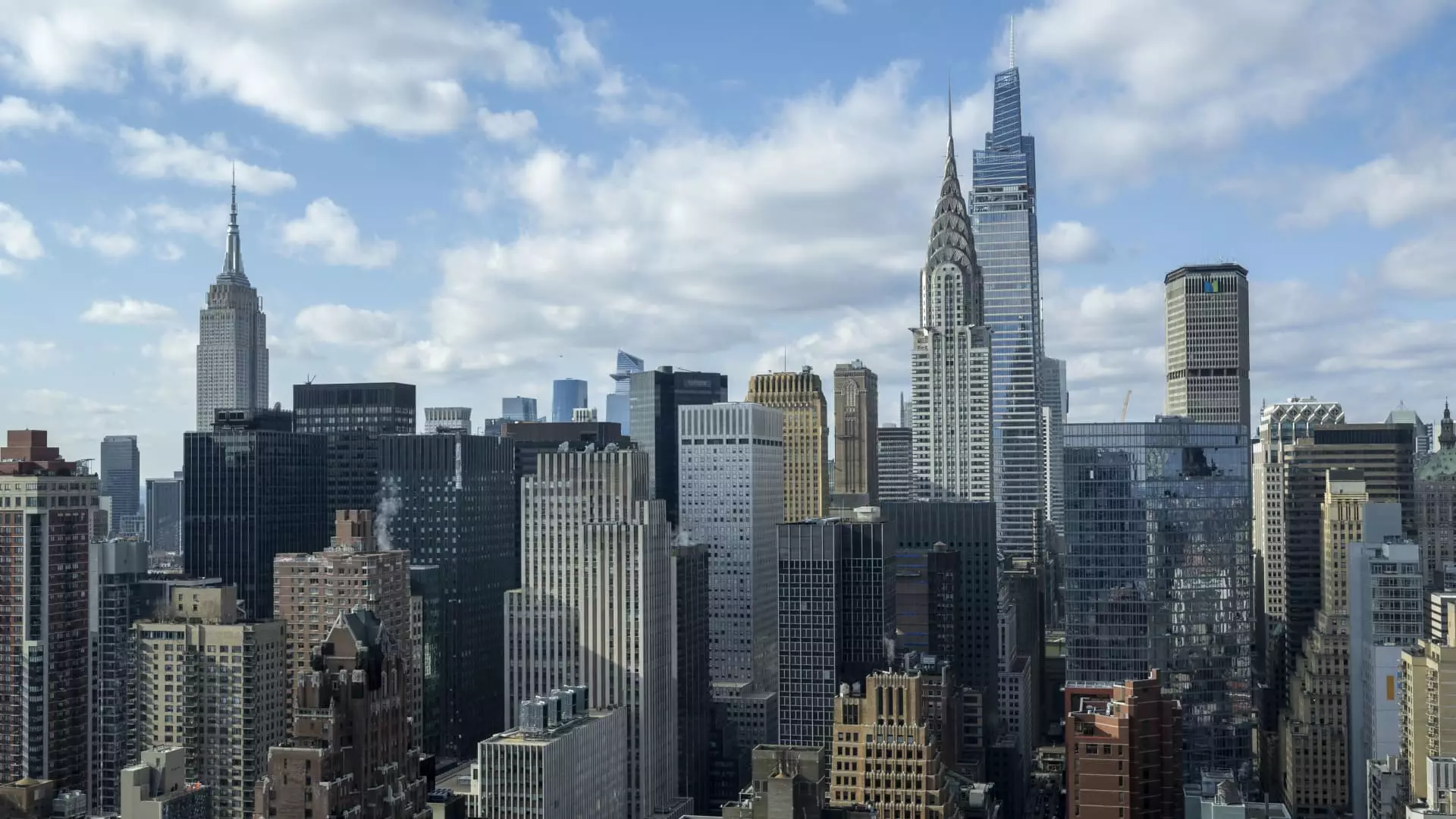In a post-pandemic landscape, New York City’s office space market is witnessing a significant resurgence, reverting to levels seen prior to global disruptions. This revival is primarily fueled by a resurgence of workers returning to their workplace, complemented by a strategic push from employers advocating for a more traditional in-office work structure. According to insights from VTS, a prominent real estate data and analytics firm, demand for office spaces in the city surged by an impressive 25% year-over-year in the fourth quarter, indicating a healthy increase in new tenant tours, which serve as early barometers for leasing activity.
A pivotal figure in this industry shift, Nick Romito, CEO of VTS, articulated that New York City’s unique cultural and economic landscape, particularly within the finance and technology sectors, is crucial to understanding this revival. The convergence of these elements is not merely coincidental; it represents a broader trend of professionals seeking collaborative environments once again. As hybrid work models become more established, there seems to be a robust desire for physical office spaces that foster interaction and innovation.
The recent earnings report from SL Green Realty Corp, a New York City-based REIT focusing heavily on Manhattan’s office and retail segments, encapsulates the prevailing sentiment in the market. Despite slightly missing revenue forecasts, analysts have keenly noted the tightening office market, underscoring a potential acceleration in leasing activities. CEO Marc Holliday highlighted the optimistic projection made by the city’s Office of Management and Budget, anticipating the creation of approximately 38,000 new office-using roles by 2025, predominantly from sectors such as finance, business services, and information technology.
Holliday’s insights illustrate the expansive implications of this job creation. Each new position translates to substantial office space requirements, especially since these jobs are unlikely to adopt remote work models. As corporations progressively call their teams back into the office several days each week, the upward trend in attendance appears undeniable. The expectation is that this trajectory will continue into 2025, pointing to a powerful revival in the demand for office space.
IBM’s recent leasing activity at One Madison Avenue stands out as a prime example of the renewed commitment to in-office workspaces. The tech giant’s signing of a substantial 92,663-square-foot lease expansion, leading to a total occupancy of over 362,000 square feet, not only reaffirms its dedication to New York’s tech sector but also emphasizes the need for collaborative environments that cater to both employees and business partners. Joanne Wright, IBM’s senior vice president for transformation and operations, spoke to the transformational nature of this expansion, highlighting the importance of fostering a synergistic workplace that enhances collaboration.
Meanwhile, while New York enjoys a prominent recovery narrative, it’s essential to note improvements across other markets. For instance, San Francisco reported a remarkable 32% growth in office space demand, albeit starting from a lower baseline. Chicago and Seattle also recorded notable increases, approximately 15% each, as businesses adapt to hybrid work models that require consistent in-office engagement. The overall national trend observed by VTS reflects a cautiously optimistic recovery, with a recorded 12% increase in office space demand for the fourth quarter, a notable contrast to historical seasonal trends.
The developments in the office space market, highlighted by data and projections, suggest a meaningful shift in corporate attitudes toward long-term planning and investment in physical office spaces despite broader economic uncertainties. Ryan Masiello, VTS’s chief strategy officer, articulated this sentiment well, noting how such growth defies seasonal expectations, touting businesses’ willingness to invest in their real estate needs as a sign of confidence returning to the market.
As the evolution of work continues, the dynamics of office spaces must adapt, fostering environments that not only accommodate work but also promote interaction and community among employees. Ultimately, New York City’s resilience amid the complexities of a changing labor market is a testament to its enduring status as a central hub for professional engagement, collaboration, and innovation.

